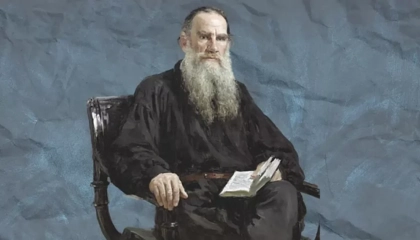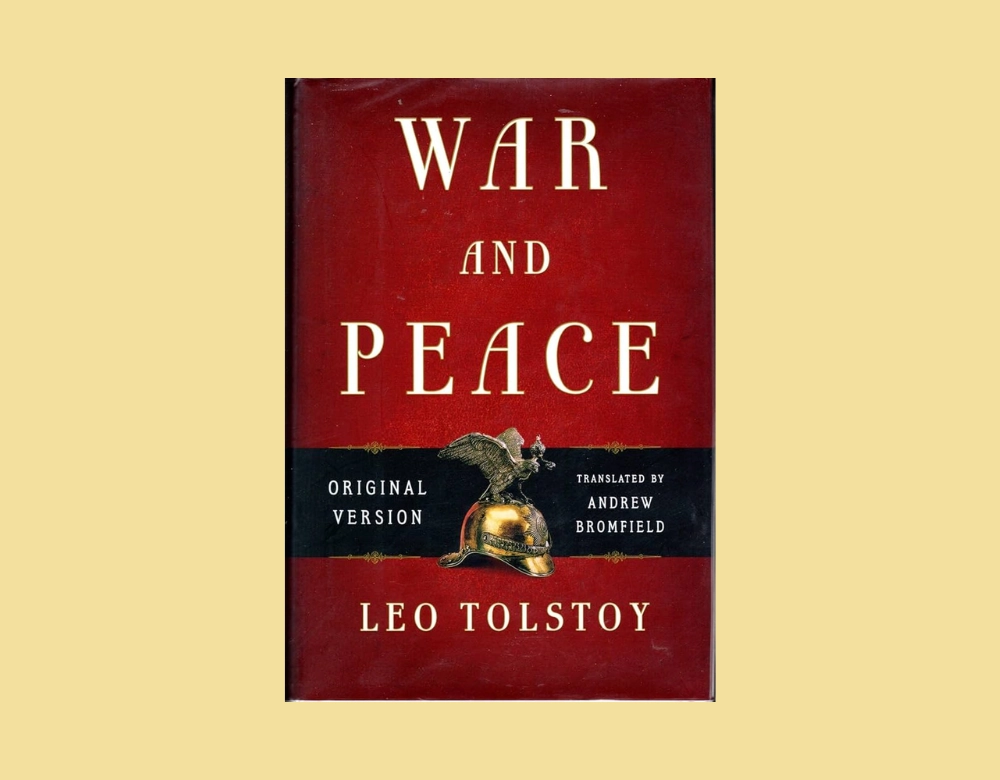Leo Tolstoy: The Count, The Philosopher, and The Literary Giant
So, Leo Tolstoy. This guy was totally huge not just in terms of his book’s length (seriously, it’s gigantic), but in terms of his moral and philosophical impact on the whole world. Born in 1828 into Russian nobility (he was a Count, man), his life was a constant battle between his privileges and his deep, later-in-life Christian-anarchist desire for simplicity and moral truth. He actually served in the Crimean War, which gave him the absolutely brutal, realistic material for the battle scenes in War and Peace.
- When It Happened: The novel was serialized between 1865 and 1869. He was literally writing a modern, realistic epic about events that occurred about 50 years before, requiring massive historical research.
- Genre: It’s an Historical Novel on a colossal scale, but it’s totally unique because it constantly breaks away into philosophical essays on the nature of history itself. It’s a novel, a history book, and a philosophy tract all rolled into one. That’s why it’s so long.
Tolstoy’s Philosophy: The Power of The Small Over The Great
Tolstoy’s core philosophical drive in War and Peace is a massive, crushing demolition of the Great Man Theory of History. He simply didn’t believe that Napoleon or any single general actually shaped events. Instead, he argued that history is driven by the aggregate of millions of small, individual human choices and actions. This idea that the total chaos of the common soldier, not the plan of the general, determines the outcome is totally revolutionary.
| Core Philosophical Theme | What it Means (The Gist of It) |
| History from the Ground Up | Tolstoy argues that nobody (not Napoleon, not even the totally brilliant Kutuzov) truly controls historical events. History is a force unto itself, and individual human action (the war) matters way more than any grand scheme (the peace). |
| The Falsehood of Authority | He totally savages Napoleon as a vain, small man driven by illusion. He praises General Kutuzov for his passivity and his deep, natural wisdom a character who trusts the flow of events rather than trying to force them. |
| The Search for Meaning | The novel follows Pierre Bezukhov, an incredibly wealthy but totally clumsy and naive idealist, on his relentless, lifelong quest for spiritual truth a truth he finally finds not in societies or theories, but in the total simplicity of family life. |
| The Contrast of War and Peace | The “war” sections are all about falseness, ego, and death, right? The “peace” sections (family, love, marriage, nature) are where true, authentic human life and value actually reside. That’s the entire structure of the book. |
Required Reading: Why This Epic is Non-Negotiable

Why University Students Must Conquer This Literary Mountain
If you’re studying European history, military strategy, Russian literature, or philosophy, Leo Tolstoy’s War and Peace is totally necessary. It provides the most detailed, human, and philosophically complex portrait of the Napoleonic Wars available, and it forces students to think about the nature of historical narrative itself.
It is absolutely crucial for students because:
- Historical Critique: It teaches students to question the standard, top-down narrative of history (the names and dates) and to look for the unwritten, chaotic, human forces that truly shape events. That’s a vital critical skill.
- Character Development: The sheer scope of character change (Pierre’s transformation, Andrey’s disillusionment, Natasha’s maturation) makes it a masterclass in how characters evolve over immense stretches of time and trauma.
- Realism in Conflict: The battle scenes (like Austerlitz and Borodino) are some of the most realistic, chaotic, and terrifying ever written. They show the total confusion and animal terror of war, not some neat, glorious strategy.
What to Read Next: Further Deep Dives into Russian Soul and History
Once you’ve finished this enormous book, you’ll definitely want to explore other works that share Tolstoy’s incredible psychological depth and historical scope.
| Recommended Reading | The Direct Connection to Tolstoy’s Themes |
| Anna Karenina (Leo Tolstoy) | His other great masterpiece. It leaves the historical scope and focuses intensely on family, passion, adultery, and suicide in contemporary Russia. It explores the same search for authentic life and moral truth, just through a domestic lens. |
| The Brothers Karamazov (Fyodor Dostoevsky) | Dostoevsky was Tolstoy’s great contemporary and rival. This novel explores similar themes of God, morality, and suffering, but through intense theological and psychological melodrama, rather than historical epic. It’s the perfect contrast. |
| The Red Badge of Courage (Stephen Crane) | A much shorter American novel about the psychological journey of a young man in the Civil War. It captures the same individual terror, confusion, and anti-heroic realism of Tolstoy’s battle descriptions. |
When a Book Becomes a Battlefield: War and Peace’s Stage Life
The Cinematic Challenge of Tolstoy’s Colossal Vision
The influence of War and Peace on film and drama is immense, even though adapting it is a total nightmare. The sheer scale hundreds of characters, massive battle scenes, intimate family drama spanning fifteen years demands a colossal budget and an equally colossal runtime. It’s basically the ultimate challenge for any director.
It set a standard for historical cinema that demands both intimate emotional realism and huge, sweeping epic spectacle. You need both to capture the essence.
- On Direction: The massive set pieces (the fire of Moscow, the Battle of Borodino) demanded pioneering techniques in crowd control and historical recreation. When done well, the film versions are utterly breathtaking.
- Performance: The actors playing the main roles (Pierre, Natasha, Andrey) need to show their characters literally age and evolve over a decade of personal, social, and national trauma. It’s a performance that demands profound transformation.
Key Adaptations: War and Peace Across Media
Despite the difficulty, the story is constantly revisited, often by those who totally embrace the challenge of the epic scale.
| Adaptation Type | Key Example/Details | Why It’s Famous/Relevant |
| The 1966-1967 Soviet Film | Directed by Sergei Bondarchuk (who also starred as Pierre). The most ambitious, epic, and longest version (over seven hours). | Famously used thousands of real soldiers as extras in the battle scenes. It is considered the definitive, most faithful cinematic realization of the novel’s scope. |
| The 1956 Film | Directed by King Vidor, starring Audrey Hepburn as Natasha. A condensed Hollywood version. | Showed that the emotional core (the love triangles and social drama) could sustain a huge budget, even if it had to sacrifice much of the philosophy. |
| BBC Miniseries (2016) | A more recent, totally popular version that focused heavily on the youthful passion and soapy drama of the relationships. | Proves the text’s enduring power; even simplified, the emotional journeys of the main characters are enough to capture a huge modern audience. |
The Enduring Rhythm of Life
So, we finish our immense journey through Leo Tolstoy’s War and Peace. Why does this gigantic book remain at the absolute peak of world literature? Because it offers the ultimate, profound comfort: that while history is chaotic, bloody, and totally overwhelming, the true, lasting human value is found in the small, simple acts of living in love, marriage, family, and the quiet spiritual quest for authentic selfhood.
- Tolstoy permanently showed us that the hero isn’t the one winning the battle, but the one who survives the experience with their moral compass intact, ready to live the peace.
- The book’s final, devastating message is that complexity (Pierre’s huge, messy life) and simplicity (Natasha’s final devotion to family) are equally valid paths to truth.
It’s a permanent, beautiful, and utterly humbling reminder that life is everything, and history is just the noise around it.

